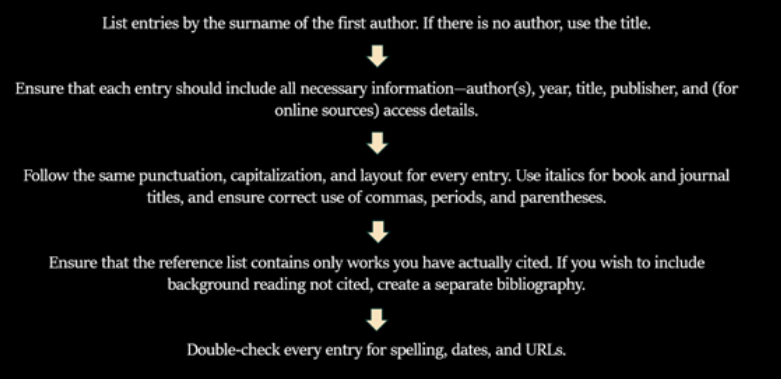Table of Contents
Understanding the basics of Harvard referencing and Harvard citation style, especially as outlined in the Cite Them Right Harvard referencing guide, is helpful for anyone pursuing academic excellence in the social sciences, humanities, or business studies. Whether you are writing an undergraduate essay, a postgraduate dissertation, or a research article, your ability to cite sources accurately is not just a technical requirement but a marker of your scholarly integrity. Proper referencing demonstrates respect for intellectual property, allows readers to trace the origins of your ideas, and ensures your work stands up to academic scrutiny.
For many students and researchers, referencing can feel daunting. The challenge is not only in remembering the numerous rules but also in applying them consistently across different types of sources. With evolving digital resources and varied citation requirements, maintaining accuracy and consistency can feel overwhelming.
Just like the APA format, MLA format, and the Chicago Manual of Style format, the Harvard citation style is one of the common styles for academic writing. The Harvard citation style uses parenthetical citations with the author’s surname and the date of publication, and it is therefore considered an “author-date format.” The Harvard referencing style comes in different “flavors” so to speak! The Harvard referencing style, especially as detailed in the Cite Them Right system, offers a flexible, widely recognized method for crediting sources. This guide details the commonly used Cite Them Right version, explaining all that you need to know about Harvard bibliography, the Harvard reference system, and Harvard citation format, with Harvard referencing style examples.
 What Is Harvard Referencing?
What Is Harvard Referencing?
The origins of Harvard referencing, which is an author-date citation style, are fascinating. A preliminary version of the author-date system was introduced by the zoologist Edward Laurens Mark in the late 19th century. He was the Director of Harvard’s zoological laboratory at the time. The first use of an early form of Harvard referencing is considered to be his paper on cytology, in which Mark used a parenthetical author-date citation along with an explanatory footnote. This citation style has since become one of the most widely used referencing systems worldwide. The Harvard referencing style is defined by its straightforward structure: in-text citations include the author’s surname and the year of publication, while the full details of each source appear in a reference list at the end of the document.
The Cite Them Right guide, developed by Richard Pears and Graham Shields, is widely adopted in academia. This guide provides a standardized, flexible approach to Harvard referencing. It accommodates a wide variety of source types, even adapting to new forms of digital content, making it a practical referencing and citation system for today’s researchers. The flexibility of Harvard referencing lies in its ability to handle everything from traditional print books to online videos, social media posts, and government reports.
Why Is Harvard Referencing Important?
If you are an academic, you should familiarize yourself with Harvard referencing. This system is important in academic writing for several reasons:
- Crediting sources: By using Harvard in-text citations and compiling a Harvard referencing style list, you acknowledge the original authors of the ideas, data, or quotations you use, distinguishing your work from theirs.
- Avoiding plagiarism: Proper referencing ensures that you do not inadvertently present someone else’s work as your own.
- Academic clarity: Citations lead readers to your sources, enabling them to verify your information, follow your research trail, and further explore your topic.
- Building credibility: Accurate referencing demonstrates your engagement with relevant literature and your commitment to academic standards, enhancing the trustworthiness of your work.
The Harvard reference system allows you to adhere to the above standards with consistency.
Key Elements in Harvard Referencing Style
The Harvard referencing style consists of two main elements:
In-text citations: In Harvard referencing, in-text citations appear within the body of your text whenever you quote, paraphrase, or refer to a source. The standard format is (Author, Year), with page numbers included for direct quotes or specific references.
Reference list entries: At the end of your document, you provide a comprehensive list of all sources cited, arranged alphabetically by author’s surname. Each entry includes full publication details, allowing readers to locate the original source.
The exact format of each reference list entry in Harvard referencing varies depending on the source type—books, journal articles, websites, reports, etc. The Cite Them Right guide provides detailed templates for each, ensuring consistency and accuracy.
 Harvard In-Text Citations
Harvard In-Text Citations
Harvard in-text citations are concise and designed to provide just enough information for readers to locate the corresponding entry in your reference list. An in-text citation must be used for a direct quote, paraphrase, or summary of someone else’s work. When using direct quotations or paraphrasing a specific section in a source, you should provide the page number(s) if available. Before the page number(s), the abbreviation “p.” is used for one page and “pp.” for more than one page).
Thus, three elements for Harvard in-text citation are (i) the last name of the author(s), (ii) the year of publication, and, where needed, (iii) the page number(s) from where you obtained the information.
Now, let us look at the layout and some examples for Harvard in-text citation:
General Format: (Author, Year)
Example: (Jonas, 2019)
Direct Quotes: Include page number(s) after the year, preceded by “p.” or “pp.”
Example: (Willis, 2007, p. 112)
Paraphrasing: Page numbers are optional but encouraged for clarity.
Multiple Authors:
Two authors: (Khan and Brown, 2022)
Three authors: (Anderson, Weaver and Han, 1999)
Four or more authors: (Sinha et al., 2005) or list all authors if required by your institution.
Corporate Authors: Use the organization’s name.
Example: (World for All, 2004)
No Author: Use the title in italics.
Example: (Conservation of Scrub Deserts, 2002)
Secondary Referencing: Use “quoted in” or “cited in” to reference a source mentioned in another work.
Example*: (Varma, cited in Kirk, 2020)
*Full references to Varma and Kirk would then be provided in the reference list.
Multiple Works by Same Author and Year: Add a lowercase letter to the year (e.g., 2024a, 2024b).
Finally, it is also important to note the different ways in which Harvard referencing in text can be done. Harvard in-text citations should be placed within the text without affecting the flow of the narrative. Therefore, Harvard in-text citations can appear at the start or end of a sentence or even in the middle (Figure 1).

Figure 1. Harvard citation style: Placement of Harvard in-text citations within your writing
How to Create a Harvard Reference List
A Harvard reference list is a complete, alphabetically arranged list of all sources you have cited in your work. Figure 2 displays the steps to follow in order to ensure that your reference list is consistent and correct.

Figure 2. Harvard referencing format: Steps to create a Harvard reference list
Harvard Referencing Format for Common Sources
Let us take a look at Cite Them Right Harvard referencing format for the most common sources used in academic writing, along with Harvard referencing style examples.
1. Journal article
Format
Surname, Initial. (Year of publication) ‘Title of article’, Title of Journal, volume number (issue number), page reference.
(Note that the title of the article appears in “title case.”)
Reference list entry
Trautmann, T. R. (1999). ‘Hullabaloo About Telugu’. South Asia Research, 19(1), pp. 53-70.
In-text citation
(Trautmann, 1999)
2. Book
Format
Surname, Initial. (Year of publication) Title. Edition if later than first. Place of publication: publisher. Series and volume number if relevant.
Reference list entry
Leedham-Green, E. (2011) A concise history of the University of Cambridge. Cambridge: Cambridge University Press.
In-text citation
(Leedham-Green, 2011)
3. Chapter in an edited book
Format
Surname of chapter author, Initial. (Year of publication) ‘Title of chapter or section’, in Initial. Surname of book editor (ed.) Title of book. Place of publication: publisher, Page reference.
Reference list entry
Ross, P. (2000) ‘How we know what we know’, in K.A. Needham (ed.) The beauty of knowledge. Rotterdam: GTB Press, pp. 99–117.
In-text citation
(Ross, 2000)
Harvard Referencing Style Examples
In addition to the formats shown in the preceding section “Harvard Referencing Format for Common Sources,” the Cite Them Right Harvard reference system guide has recommended formats for lesser used or uncommon sources in academic writing as well.
Below are formats along with Harvard referencing examples for uncommon sources.
Report
Format
Author/Organization (Year) Title of report. Place of publication: Publisher.
Reference list entry
UNESCO (2024) 2024 Gender Report. Paris: UNESCO.
In-text citation
(UNESCO, 2024)
eBook
Format
Author, Initial(s). (Year) Title of eBook. [eBook] Place of publication: Publisher. Available at: URL (Accessed: date).
Reference list entry
Earhart, J. (2021) Biodiversity Conservation Corridors. [eBook] Quito: SAM Publishers. Available at: URL (Accessed: 3 May 2021).
In-text citation
(Earhart, 2021)
Newspaper article
Format
Surname, Initial. (Year of publication) ‘Title of article’, Title of Newspaper, Day and month, Page reference.
Reference list entry
Jain, B. (1999) ‘The year of the pangolin’, Conservation Daily, 12 July, p. 4.
In-text citation
(Jain, 1999)
Social media post
Format
Author/Username (Year) ‘Text of post’, Platform, date posted. Available at: URL (Accessed: date).
Reference list entry
@SpaceX (2025) ‘Falcon 9 launches Ax-4, Dragon’s 18th human spaceflight mission’, X, 25 June. Available at: URL (Accessed: 25 June 2025).
In-text
(@SpaceX, 2025)
 Tips for Using Cite Them Right Harvard Referencing
Tips for Using Cite Them Right Harvard Referencing
Now that you have understood the basics of the Cite Them Right Harvard reference system, how can you be more efficient in using it? Here are some handy tips!
- Always check the reliability of each source: Always use credible, scholarly sources and double-check author names, publication dates, and URLs.
- Be consistent: Apply the same formatting rules throughout your document—don’t mix styles.
- Use reference managers: Tools like Paperpal, Zotero, and EndNote can automate citation formatting and help manage large numbers of references.
- Consult the guide: Refer to the latest edition of Cite Them Right for up-to-date rules and examples.
- Proofread meticulously: Review your reference list for typos, missing details, and incorrect ordering.
Free Harvard Referencing Tools for Academics
To streamline the referencing process and ensure accuracy, you can explore free citation tools like Paperpal which supports the Harvard referencing system, along with over 10,000 other citation styles. It helps automate citation formatting, checks for errors, and ensures your references are up to date with the latest standards. Other popular tools include Zotero, Mendeley, and Cite This For Me, which offer browser plugins and integration with word processors to make referencing effortless.
Conclusion and Key Takeaways
Harvard referencing, especially as standardized by the Cite Them Right guide, is a gold standard in academic citation for students and researchers in the social sciences, humanities, and business studies. By learning the mechanics and intricacies and thereby mastering Harvard in-text citations and creating accurate Harvard reference lists, you are able to credit original authors, uphold academic integrity, avoid plagiarism, and improve the credibility of your work. The flexibility of the Harvard referencing style allows you to cite a wide range of sources, from books and journals to websites and social media, while maintaining consistency and clarity.
Key points about Harvard referencing and Harvard citation style:
- Always use the author-date format for in-text citations.
- Provide full publication details in your reference list, arranged alphabetically.
- Follow the Cite Them Right guide for source-specific formatting.
- Use reference management tools like Paperpal to save time and reduce errors.
- Proofread your citations and references for accuracy and consistency.
With practice and the right resources, Harvard referencing will become second nature, allowing you to produce academically rigorous, credible, and professional work every time! What is more, citation generators can make this step easy and quick for you.
Frequently Asked Questions
What is the difference between a Harvard bibliography and a Harvard reference list?
How do I reference a source with no author in Harvard citation style?
- When citing a source with no individual or corporate author in the Harvard referencing style, you should follow these conventions:
- Always use the title in place of the author in both in-text citations and the reference list.
- Italicize the title if it is a standalone work (book, website, report).
- The rest of the reference should follow the usual Harvard format for that type of source.
Can Harvard referencing be used for non-academic writing?
How do I cite multiple sources in a single Harvard in-text citation?
How to reference a book Harvard style?
Harvard referencing websites involve what type of information?
Paperpal is a comprehensive AI writing toolkit that helps students and researchers achieve 2x the writing in half the time. It leverages 23+ years of STM experience and insights from millions of research articles to provide in-depth academic writing, language editing, and submission readiness support to help you write better, faster.
Get accurate academic translations, rewriting support, grammar checks, vocabulary suggestions, and generative AI assistance that delivers human precision at machine speed. Try for free or upgrade to Paperpal Prime starting at US$25 a month to access premium features, including consistency, plagiarism, and 30+ submission readiness checks to help you succeed.
Experience the future of academic writing – Sign up to Paperpal and start writing for free!



